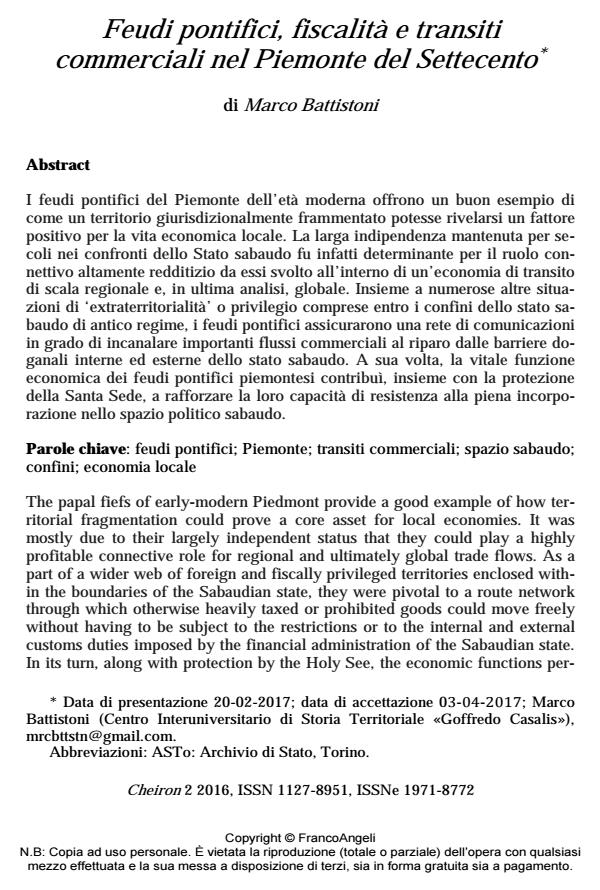Feudi pontifici, fiscalità e transiti commerciali nel Piemonte del Settecento
Journal title CHEIRON
Author/s Marco Battistoni
Publishing Year 2017 Issue 2016/2
Language Italian Pages 25 P. 64-88 File size 301 KB
DOI 10.3280/CHE2016-002004
DOI is like a bar code for intellectual property: to have more infomation
click here
Below, you can see the article first page
If you want to buy this article in PDF format, you can do it, following the instructions to buy download credits

FrancoAngeli is member of Publishers International Linking Association, Inc (PILA), a not-for-profit association which run the CrossRef service enabling links to and from online scholarly content.
The papal fiefs of early-modern Piedmont provide a good example of how ter-ritorial fragmentation could prove a core asset for local economies. It was mostly due to their largely independent status that they could play a highly profitable connective role for regional and ultimately global trade flows. As a part of a wider web of foreign and fiscally privileged territories enclosed within the boundaries of the Sabaudian state, they were pivotal to a route network through which otherwise heavily taxed or prohibited goods could move freely without having to be subject to the restrictions or to the internal and external customs duties imposed by the financial administration of the Sabaudian state. In its turn, along with protection by the Holy See, the economic functions performed by papal fiefs enabled their long-lasting resistance to full integration into the Sabaudian political space.
Keywords: Papal fiefs; Piedmont; trade flows; Sabaudian space; boundaries; local economies
Marco Battistoni, Feudi pontifici, fiscalità e transiti commerciali nel Piemonte del Settecento in "CHEIRON" 2/2016, pp 64-88, DOI: 10.3280/CHE2016-002004